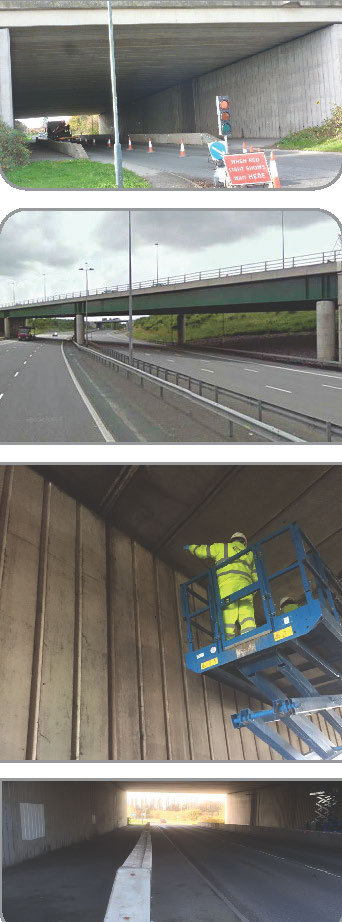 Bridge Strengthening and Bearing Maintenance – M6 Toll Bridges B443 & B518, Warwickshire
Bridge Strengthening and Bearing Maintenance – M6 Toll Bridges B443 & B518, Warwickshire
Client
Midland Expressway Limited (MEL)
Works Commenced
October 2015
Works Completed
December 2015
Freyssinet was engaged by Midland Expressway Ltd in 2013 to carry out inspections on a number of structures on the M6 Toll Road. Three overbridges were identified as requiring deck strengthening work. Freyssinet commenced concrete repairs and bridge bearing replacement on the M6 Toll River Cole bridge in the first phase of works.
In 2015, MEL appointed Freyssinet again to undertake deck stiffening at bank seating locations on the B518 overbridge on the M6 Eastbound link and the B443/M42 overbridge Northbound Link, located near Coleshill, 11 miles from Birmingham.
The existing condition and design of the structures meant that the cantilevered approach sections of bridge deck between piers and bank seat were ‘bouncing’ vertically under live load conditions. Surface cracking had also occurred along the line of the transverse beam on the approach side on both structures, although significantly less pronounced at B443.
Works provided by Freyssinet included:
- Scaffold erection to access the work area
- Steel erection
- Hydraulic jacking works
- Installation of permanent steel packing shims
Following the deck strengthening works, Freyssinet carried out maintenance works to three separate structures on the M6 Toll. The works were associated with bridge bearing inspections Freyssinet had carried out at an earlier date to Watton Lane Bridge, Effluent Conduit Bridge and River Tame Bridge.
The works to all three bridges included cleaning of elastomeric bearings, repairs to mechanical bearings, removal of redundant mechanical bearing baseplates, removal of unnecessary polystyrene from bearings, application of corrosion protection and installation of pigeon netting.
The strengthening and bearing maintenance works significantly increase the serviceable life of the structures and reduce maintenance issues of the carriageway surfacing and movement joints.
